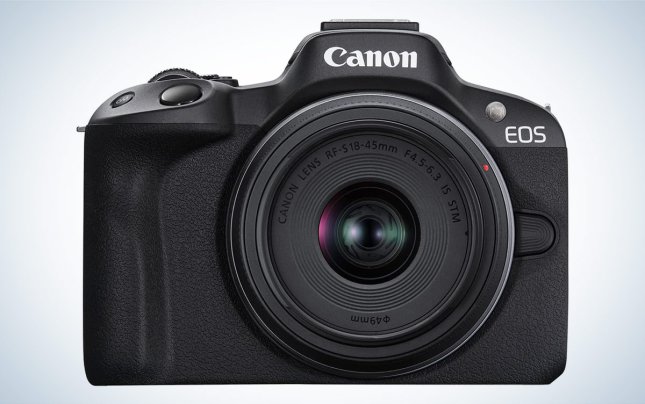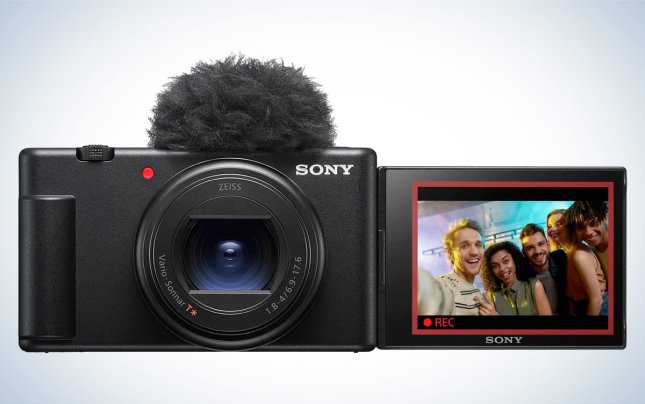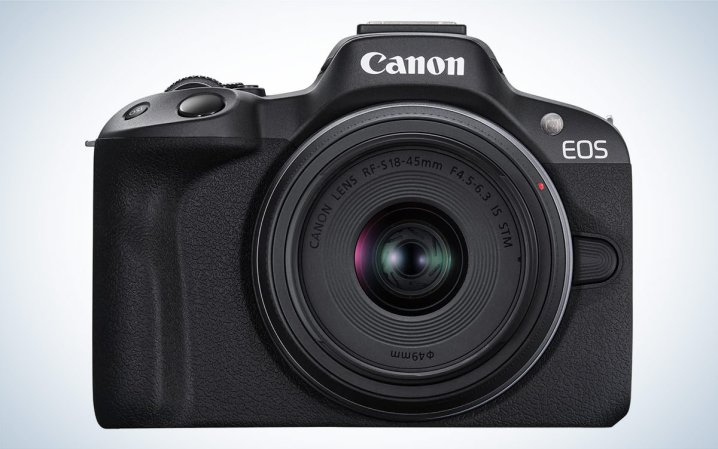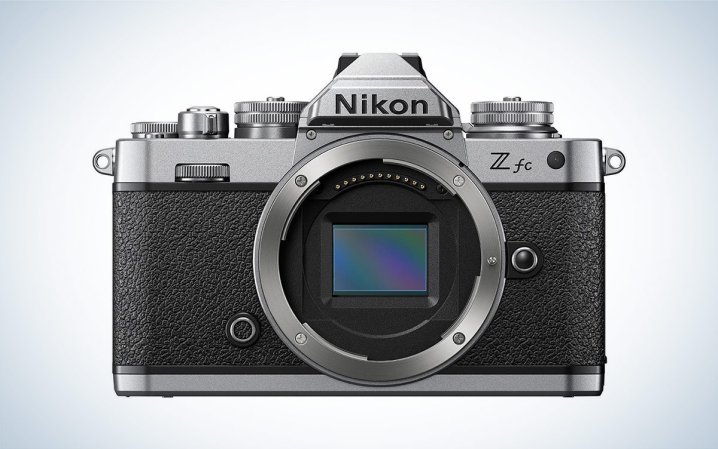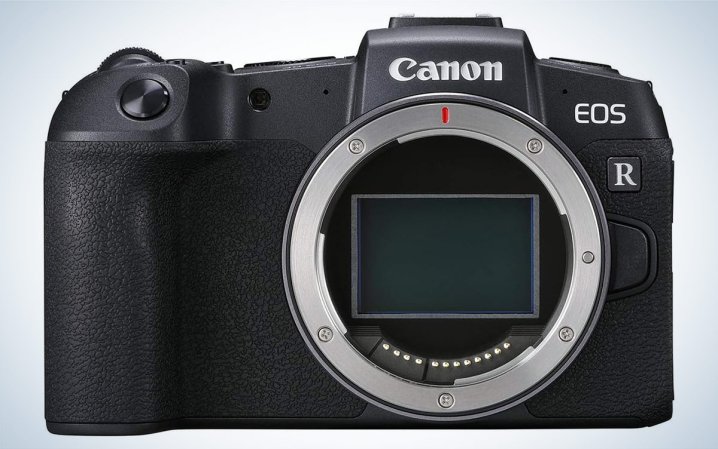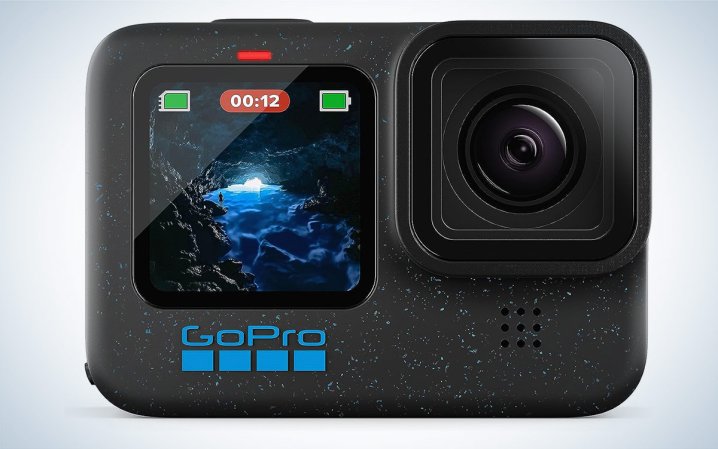We may earn revenue from the products available on this page and participate in affiliate programs. Learn more ›
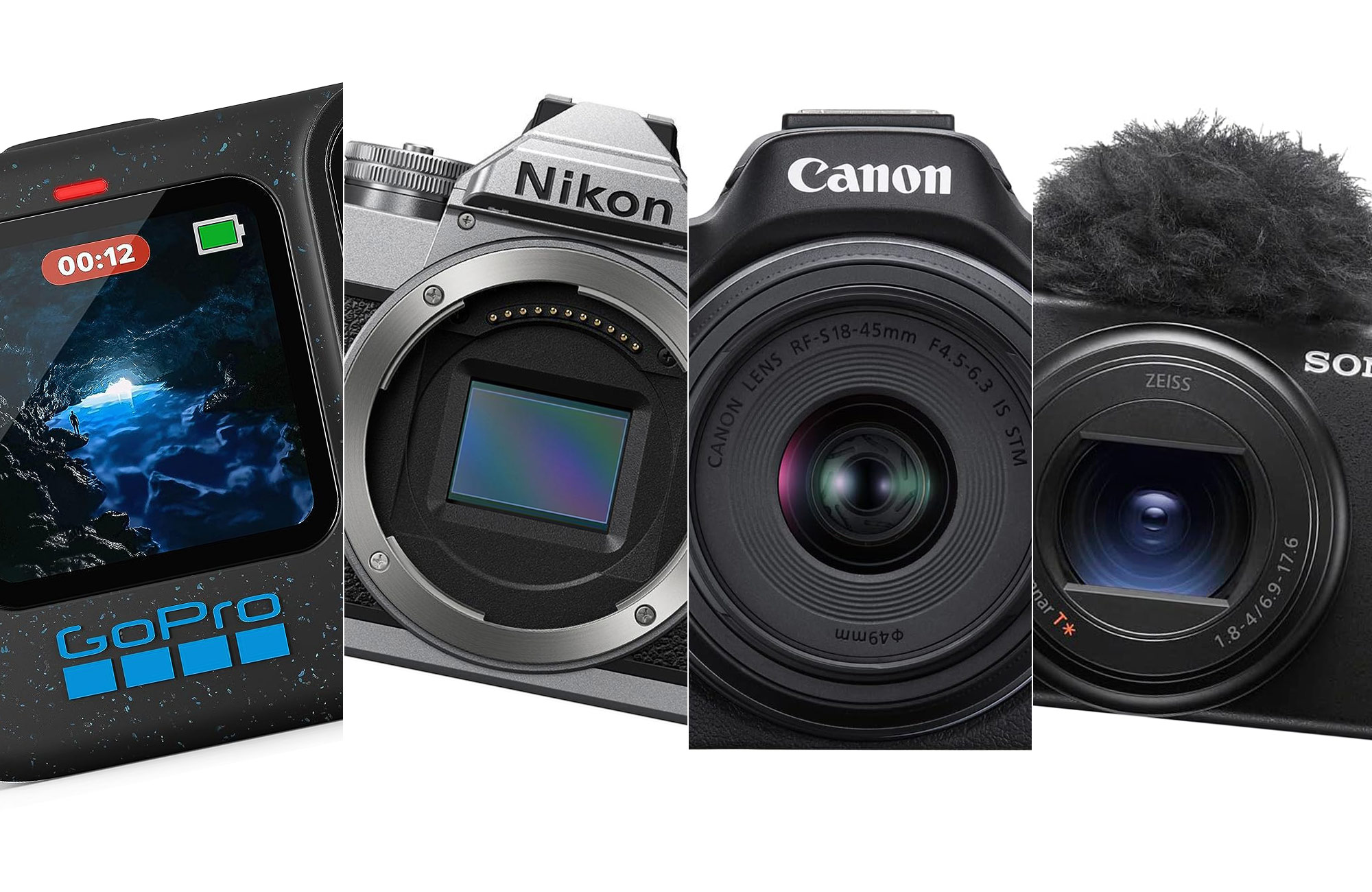
Survey the market right now, and you’ll find that cameras under $1,000 offer some truly impressive features that were once reserved for enthusiast and even pro models. Since mirrorless cameras took over from DSLRs in the last decade, cameras have gotten smarter, faster, and more compact. If you’re looking to upgrade from a smartphone, learn the basics of photography, step up your vlogging game, or just take pictures that look different from everyone else’s smartphone snaps, the best cameras under $1,000 can help while leaving enough cash left over for memory cards.
- Best overall: Canon EOS R50
- Best design: Nikon Z fc
- Best for vlogging: Sony ZV-1 II
- Best full-frame: Canon EOS RP
- Best action camera: GoPro Hero 12 Black
- Best Sony mirrorless: Sony a6400
How we chose the best cameras under $1,000
I have been a professional photographer and camera journalist for nearly two decades. During the course of my work at our sibling publication, Popular Photography, I have shot with almost every major camera released in the past decade. In order to choose the best cameras under $1,000, I looked for models with particular strengths that would likely fit specific shooting styles. I emphasized durability, performance, and less tangible variables like access to a large infrastructure of lenses and accessories.
You’ll notice that you won’t find any DSLRs on this list. Everything is either a compact or mirrorless camera. I still like DSLRs, and they can still be great workhorse cameras, but they use older lenses that are only compatible with newer models via adapter. Plus, DSLRs miss out on some very useful features like object-based AF tracking.
The best cameras under $1,000: Reviews & Recommendations
While we always make specific picks for models that we think will fit your needs, there’s always overlap. Peruse the entire list before getting your heart set on a specific camera.
Best overall: Canon EOS R50
Best overall
Canon EOS R50
Pros
- Comes in well-under $1,000, even with a lens
- Uses Canon’s current lens mount, for which it’s always releasing new glass
- Super-fast shooting up to 15 fps with electronic shutter
- Advanced A+ Assist provides useful help for shooting in tough situations
- Excellent AF
- Small and light
Cons
- Very basic weather sealing
- May feel too small for some, especially when paired with a large lens
Specs
- Lens mount: Canon RF
- Sensor size: APS-C
- Megapixels: 24.2
- Maximum video resolution: 4K at up to 30 fps
Canon’s entry-level mirrorless camera offers a seriously impressive list of specs, considering its roughly $800 price tag. And that includes the standard 18-45mm kit lens. The 24.2-megapixel resolution is tried-and-true as it was the standard for several years before resolutions started to shoot up. This provides a nice balance of easy-to-work-with files and the ability to crop in on an image after the fact.
The camera weighs just about a pound, which makes it extremely compact. Compared to my professional-grade cameras, it’s noticeably lighter from the moment you pick it up. Despite its entry-level status and diminutive build, the R50 still offers many of the high-end features found in Canon’s enthusiast-level cameras. The object-based autofocus tracking does a stellar job locking onto humans and even animals, keeping them in focus without any extra work on the photographer’s part. It also has a fully articulating touchscreen display and a mic port for external audio.
One thing I particularly like for beginners in the R50: It offers an Advanced A+ Assist shooting mode, which helps simplify the process of capturing images in difficult locations. It’s like auto shooting mode, but a lot smarter. That’s a solid middle ground between total beginners and more advanced users who prefer more manual shooting modes.
Overall, this is a great all-around camera that will leave money left in your budget for an extra lens like the 50mm f/1.8 STM, which performs way beyond its $169 price tag.
Best design: Nikon Z fc
Best design
Nikon Z fc
Pros
- Modeled after one of the best film cameras ever made
- Ample tactile controls
- Excellent color and overall image quality
- Built tougher than most cameras at this price point
- Easy to adapt vintage lenses
- Snappy overall operation
Cons
- No lens—$1,000 only gets you the body unless you find it on sale
Specs
- Lens mount: Nikon Z
- Sensor size: APS-C
- Megapixels: 20.9
- Maximum video resolution: 4K at 30 fps
The Nikon FM2 is a truly iconic film SLR, and Nikon drew heavily from it to create this enthusiast-grade mirrorless camera. The top of the body offers a robust selection of actual dials to control variables like ISO, shutter speed, and exposure compensation. I personally love navigating through camera settings with tactile controls, so this earns the Z fc tons of points with me. I know many higher-level shooters who feel the same way.
The body is relatively compact, but it’s easy to hold. The contoured body makes it easy to grasp with your shooting hand, which is good if you want to navigate the controls without removing the camera from your eye. The APS-C sensor isn’t quite as impressive as some more expensive full-frame models, but it provides excellent color and overall image quality.
The viewfinder is also no slouch. It offers 100 percent coverage in both horizontal and vertical directions. The OLED display in the viewfinder offers 2.3 million pixels of resolution and seven levels of brightness adjustment depending on your needs.
Feel is truly crucial for creating an enjoyable camera, and Nikon absolutely nailed it with this retro-cool body.
Best for vlogging: Sony ZV-1 II
best for vlogging
Sony Z-V1 II camera
Pros
- Extremely compact body
- Advanced microphone
- Fast lens with useful zoom range
- Screen flips around to the front for vlogging
- Solid still performance
- Sports a surprising array of physical buttons
Cons
- No access to interchangeable lenses
Specs
- Lens mount: Fixed
- Sensor size: 1-inch type
- Megapixels: 20.1
- Maximum video resolution: 4K up to 30 fps
Smartphone cameras have come a long way in recent years, but creators almost always outgrow them. They want more flexibility, better image quality, and the creative control that comes with a dedicated camera. The Sony ZV-1 II is a great step up from a smartphone without making the process overly complicated for people who just want to get up and shoot in a hurry.
This is a compact camera with an integrated zoom lens. So, you can’t swap the lens out, but you don’t have to worry about buying or choosing a lens every time you shoot. The built-in lens offers the same field of view you’d expect from an 18-55mm lens on a full-frame camera. That makes it plenty wide for capturing several people in the same shot when zoomed out. But it still offers a flattering perspective for portraits when zoomed in. The lens is also fast in terms of aperture, so it performs well in low-light.
This camera offers several vlogging-specific features that aspiring YouTubers will appreciate. The screen flips around to face the front of the camera, which is necessary for framing a selfie photo or video. The integrated three-microphone array provides considerably better sound than we’re used to out of a built-in microphone. It even has a built-in Product Showcase mode, which tells the autofocus system to prioritize products when they’re held up in front of the lens. So, if you’re doing an unboxing or other product-oriented video, you won’t have to worry about focus.
If you want something more advanced, check out our list of the best video cameras.
Best full-frame: Canon EOS RP
Canon EOS RP
Pros
- One of very few full-frame options under $1,000
- Excellent overall image quality
- Relatively compact body for that big sensor
- Decent tactile controls
- Rotating screen
Cons
- Shooters coming from Canon DSLRs will miss the joystick and control wheel on the camera’s back
Specs
- Lens mount: Canon RF
- Sensor size: Full-frame
- Megapixels: 26.2
- Maximum video resolution: 4K
When it comes to camera sensors, size isn’t everything. But, some inherent advantages come with a full-frame sensor. The primary benefit has to do with lenses. Because the sensor is the same size as a single image shot on 35mm film, full-frame cameras like the RP can utilize the entire image circle from high-end lenses. Smaller APS-C sensors only capture a smaller portion of the image, which makes the lenses appear more zoomed in. If you’re switching from a DSLR and you already own some glass, that’s a big deal.
That 26-megapixel sensor also does an excellent job with color reproduction and low-light performance. Plus, with a larger sensor, it’s easier to get shallow depth-of-field effects (where the subject is sharp, but the background is blurry).
The Canon RP has been around for several years now, so it doesn’t have the absolute newest guts inside. But it still performs well above its price tag. In addition to excellent still photography performance, it can capture 4K video with image stabilization.
Best action camera: GoPro Hero 12 Black
Best action camera
GoPro Hero 12 Black
Pros
- Absurdly effective shake reduction
- Excellent image quality
- Super-rugged design
- Built-in front-and-back screens
- Robust app with remote control functionality
- Tons of mounting options
Cons
- Not a huge leap in tech from the Hero 11
Specs
- Lens mount: Fixed
- Sensor size: 1/1.9 custom
- Megapixels: 27
- Maximum video resolution: 5.3K
The GoPro Hero 12 Black is a heck of a lot of camera for under $400. It offers a surprisingly sharp super-wide angle lens with a revamped image sensor. It shoots high-res, high-framerate video that translates into super-smooth footage. Plus, it has some of the best image stabilization we have ever seen. It’s almost shocking how smooth the GoPro can make even the burliest action shots look.
The camera sports a front- and back-side touchscreen for navigating menus and composing shots, but it also offers a robust app for controlling the camera and then editing and reviewing footage after it’s shot.
The new Hero 12 isn’t a huge revolution over the 11 that came before it, but there are some useful upgrades, including a standard tripod socket for easier mounting on non-GoPro accessories.
With 27-megapixel stills, it’s no slouch in terms of photography, but it really shines in terms of video. Plus, it’s ultra-durable and totally waterproof (GoPros make the best underwater video cameras) without an extra case, so you don’t have to worry about it breaking and costing you even more money.
Best Sony mirrorless: Sony a6400
Best Sony mirrorless
Sony a6400
Pros
- Fast, accurate autofocus
- Excellent image quality
- Lots of tactile controls
- Built-in viewfinder (not always a given in rangefinder-style bodies)
- Tilting screen
- Small and light
Cons
- It’s a few generations old by now
Specs
- Lens mount: Sony E
- Sensor size: APS-C
- Megapixels: 25
- Maximum video resolution: 4K
This isn’t the latest addition to Sony’s excellent A6X00 series, but it still has plenty of life in it, especially at its now permanent sub-$1,000 price. It relies on Sony’s proven 24.2-megapixel sensor and a well-regarded rangefinder-style design. Despite its compact nature, it offers plenty of tactile controls, including a mode dial and a function dial.
The built-in viewfinder is big, bright, and easy to see. That’s not always a given with a camera this small and cheap. Its $1,000 price tag includes a fully electronic 16-50mm kit lens that flattens out when it’s not in use for easy transport.
This is a fantastic vlogging camera if you want to shoot video. Sony offers an accessory microphone for the camera, and it’s light and compact to hold at arm’s length for an extended period of time. Not bad for an older model that saves you more than $400 compared to the latest and greatest.
What to consider when buying a camera under $1,000
As stated earlier, this list is made up entirely of mirrorless or compact cameras. DSLRs can still be great, but they lack some of the very convenient features found in their mirrorless counterparts. They’re also not natively compatible with the most recent lenses from various manufacturers. Here are some more variables and terms to consider before making a purchase.
Lens options
Lenses make a huge difference when it comes to the look of your content. Compact-style cameras have built-in lenses, which some shooters like because they keep everything in one tidy package. It’s a matter of simplicity over flexibility. Buying into an interchangeable-lens camera system is more complex. You’ll want to make sure that your camera uses the latest lenses. Most manufacturers have switched their focus to mirrorless lenses over DSLR glass, which means you’ll want to go mirrorless if you want to futureproof your purchase as much as possible.
Resolution and sensor size
Most cameras on this list have resolution in the 20-30 megapixel range, which should be plenty for most users. When it comes to sensor size, you’ll typically have to choose between full-frame and APS-C. APS-C is about three-quarters the size of a full-frame sensor. Full-frame cameras typically offer better depth-of-field effects, better low-light performance, and increased access to wide-angle lenses. APS-C sensors make telephoto lenses more acceptable, offer smaller lenses, and typically cost less than their full-frame siblings.
Video features
4K capture is common across the board at this point. Most cameras on this list top out around 30 fps, which is a standard video framerate. Some shooters prefer 24 fps because it simulates the cinema, but not all cameras offer it. Some more high-end cameras also offer 4K video at 60 fps and beyond for smoother-looking footage. Again, that’s something to check for before you buy if it’s important to you.
You’ll also want to make note of the recording formats. We won’t go deep on those here because they can get extremely confusing, but it pays to know what your workflow looks like before you buy a camera so you know everything will work nicely together.
Manual features
When you’re a beginner, manual mode can seem intimidating. That won’t last forever, though, and you want a camera that you can grow into. Manual mode offers creative freedom for those willing to climb the learning curve. Beginner-friendly features are great for getting started, but eventually, you’ll want to strike out on your own.
Build quality
Most cameras under $1,000 aren’t built to endure super-harsh conditions. If you’re planning on really abusing your camera, consider a model that’s built for it. That’s why we recommend the GoPro so often. You’ll make better content if you’re not worried about breaking your pricey camera.
FAQs
DSLRs aren’t quite dead just yet, but they’re close. Most manufacturers have switched their focus to mirrorless models. You won’t find many (if any) new DSLRs or DSLR lenses hitting the market any time soon. Going mirrorless now will ensure that your lenses will work with future bodies, and your skill won’t need to adapt when you inevitably make the switch.
DSLRs have a mirror box inside that flaps up and down with every shot. Moving parts break down faster than static components, so mirrorless models can last longer for that reason. If you’re asking this question regarding battery life, mirrorless cameras typically die well before DSLRs because they don’t need to power an electronic viewfinder.
Mirrorless cameras are great for using vintage lenses. You can typically get some great deals on older glass if you don’t mind using an adapter and focusing manually. That makes them especially useful for shooters who primarily capture video where manual focus is the norm.
Final thoughts regarding the best cameras under $1,000
- Best overall: Canon EOS R50
- Best design: Nikon Z fc
- Best for vlogging: Sony ZV-1 II
- Best full-frame: Canon EOS RP
- Best action camera: GoPro Hero 12 Black
- Best Sony mirrorless: Sony a6400
Pro cameras still cost you thousands of dollars, but you can get a truly capable imaging machine for less than $1,000. The trick to picking the right one is focusing on your specific niche. If you’re really into still photography, go for something with a full-frame sensor. If you’re an aspiring video creator, get something specifically meant for shooting motion. Whatever you pick, learn how to use it to the best of its abilities. Even the best cameras under $1,000 won’t be worth much without creativity.
